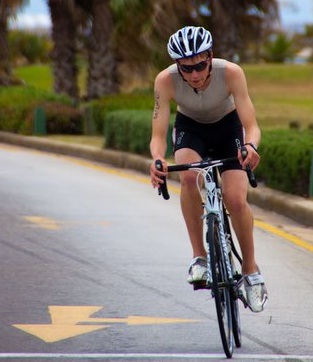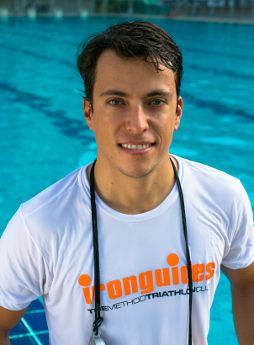Press Release: ironguides Partners up with AsiaTRI
Introducing a new triathlon website focusing on Asia!
Asiatri.com is the leading website for all triathlon related news specific to the Asian region. “Our goal is to be the one-stop website for local athletes who are seeking the most updated content through our exclusive articles, local race coverage, international race coverage, Asian races calendar, local athlete and teams interviews and everything that is relevant to any Asian based triathlete” says Wagner Araujo who is head of MundoTRI group, a Brazilian based triathlon magazine in Portuguese language that is also launching its edition in Spanish for Latin America athletes.
AsiaTRI covers all formats and distances of the sport. Just fresh from the races is reporting on Asian athletes at the ITU World Championships. AsiaTRI aims to bring more news and coverage of Asian athletes at races to the community.
AsiaTRI is excited to help the growth of triathlon in the region by bringing the whole community together in one place. Find us at the following links:
https://www.facebook.com/asiatrilive
–
About AsiaTRI and ironguides
ironguides and MundoTri.com from Brazil are partnering and providing support to this new effort for triathlon in Asia. ironguides will provide content specific to triathlon in the region through articles, videos and training plans.
Coach Vinnie Santana on the partnership, ““We are excited to be contributing to AsiaTRI growth in this region. As a coach, I’ve always felt the need for centralized for our Asian based athletes.”
ironguides is the leading Lifestyle Facilitation company for athletes of all abilities. We provide coaching and training services and plans, as well training education, health and fitness products to help you learn and live a healthy lifestyle: https://www.ironguides.net/
MundoTri is Brazil’s largest triathlon focused website and has had a presence for over 7years. MundoTri provides the latest information and news on triathlon in Brazil and is seen as the central point for the triathlon community in Brazil. Check out more from MundoTri at: http://www.mundotri.com/







 Coach Shem:
Coach Shem:  Coach Vinnie:
Coach Vinnie:  Coach Woody on his athlete, Stefan and his road to Kona with a busy work schedule and young family. Stefan also shares his history and thoughts on training with Kona as his goal.
Coach Woody on his athlete, Stefan and his road to Kona with a busy work schedule and young family. Stefan also shares his history and thoughts on training with Kona as his goal.



 I joined ironguides in late 2009 after I completed my first year as a pro. I had just moved to Switzerland then and started to work 4-5 hours a day, which let me pay my triathlon expenses. It was great to start working with my coach, as he could plan my training according to my work schedule, and he increased the quality of my training a lot, though I spent less time on my bike or running. Thanks to my swimming backgound, I never had a problem to get out the water with the first pack, but thanks to ironguides my bike splits improved a lot, and I was able to stay in the lead group during the whole bike leg and I was able to start the running in a fresher condition! This consistent work was not easy, but all was worth it as I claimed my first ever Ironman title in 2011 in Korea, and have become a steady Top-10 finisher in any Ironman or Ironman 70.3 races around the world.”
I joined ironguides in late 2009 after I completed my first year as a pro. I had just moved to Switzerland then and started to work 4-5 hours a day, which let me pay my triathlon expenses. It was great to start working with my coach, as he could plan my training according to my work schedule, and he increased the quality of my training a lot, though I spent less time on my bike or running. Thanks to my swimming backgound, I never had a problem to get out the water with the first pack, but thanks to ironguides my bike splits improved a lot, and I was able to stay in the lead group during the whole bike leg and I was able to start the running in a fresher condition! This consistent work was not easy, but all was worth it as I claimed my first ever Ironman title in 2011 in Korea, and have become a steady Top-10 finisher in any Ironman or Ironman 70.3 races around the world.” “The 12-week plan is fantastic. I have made breakthroughs in all three disciplines, especially the swim — and I am not a beginner in the sport! … for so many seasons I was sucked into the Zone-based myth and was always overtrained when I hit the Build phases. Now, even though the program is demanding, I always feel rested. I have not had an injury nor felt weak or sick. My times are always improving and there are actually LESS rest days than the Zone-based training program. It’s amazing really!” Thyrio, ironguides Forum
“The 12-week plan is fantastic. I have made breakthroughs in all three disciplines, especially the swim — and I am not a beginner in the sport! … for so many seasons I was sucked into the Zone-based myth and was always overtrained when I hit the Build phases. Now, even though the program is demanding, I always feel rested. I have not had an injury nor felt weak or sick. My times are always improving and there are actually LESS rest days than the Zone-based training program. It’s amazing really!” Thyrio, ironguides Forum  Keegan Scott “I’ve always been self-coached but didn’t want the commitment of a coach while I was interested in following a structure that works. The subscription service is a great idea as I’m still able to train using The Method, while it fits my budget and gives me flexibility to change the focus from single discipline to the balanced programme as I progress into the season.”
Keegan Scott “I’ve always been self-coached but didn’t want the commitment of a coach while I was interested in following a structure that works. The subscription service is a great idea as I’m still able to train using The Method, while it fits my budget and gives me flexibility to change the focus from single discipline to the balanced programme as I progress into the season.”




Recent Comments